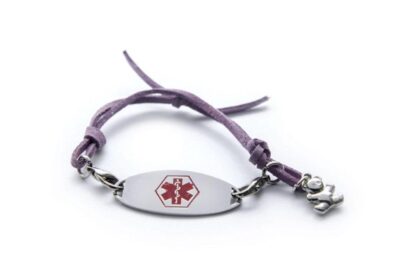Enjoying a stint in a hot tub, for many people, is a form of relaxation. Others use hot tubs to recover after an injury or a strenuous work out. But are hot tubs safe for people with diabetes?
What is a hot tub?
If you’ve ever sat in a hot tub, you no doubt felt the tension melting away from stressed or overtired muscles. A hot tub is a large tub filled with heated water. You might use a hot tub to relax, to help heal an injury, or to socialize. In fact, hot tubs are intended for more than one person, unlike a bathtub.
Most hot tubs are placed outdoors on a patio or in the backyard, although you can install a hot tub indoors, as well.
To get cutting-edge diabetes news, strategies for blood glucose management, nutrition tips, healthy recipes, and more delivered straight to your inbox, sign up for our free newsletters!
Sometimes people interchange the term “hot tub” with “Jacuzzi,” but they’re actually different. In fact, says the website The Spruce.com, a Jacuzzi is a brand name for a jetted tub, and it was originally developed for people who had arthritis. Jacuzzis tend to be found at high-end hotels and spas, but you can purchase one for your home, too. Hot tubs tend to be more affordable and more energy efficient than Jacuzzis.
Hot tubs continue to increase in popularity. The Pool & Hot Tub Alliance states that sales of hot tubs and swimming pools continue to rise, and the increase demand may, in part, be due to quarantining as a result of the COVID-19 pandemic.
Are hot tubs safe for people diabetes?
Hot tubs work to boost your core temperature, and by doing so, cause your body to go into “cooling mode,” which means that blood vessels under the skin dilate to release extra heat. The increase in blood flow helps move nutrients throughout the body, the warmth of the water helps ease swelling and loosens tightness in muscles, and being in the water takes stress off of joints. Plus, mentally, sitting in a hot tub can help you unwind and destress.
Potential negative effects from hot tubs
While most people with diabetes can enjoy spending time in a hot tub, it’s important to consider the following potential negative effects.
Risk of burns
Hot tub water temperatures generally range from 90°F to 104°F, which is the standard maximum temperature. Temperatures above 104°F could cause drowsiness and may lead to unconsciousness with subsequent drowning.
People with diabetes who have neuropathy in the feet need to be especially careful with getting into a hot tub (or a bathtub, for that matter), since neuropathy can decrease sensitivity to hot temperatures. It’s always best to test the water before climbing in to any hot water by dipping your elbow in the water. Make sure, too, that the water temperature does not exceed 104°F.
Risk of heat exhaustion and heat stroke
Diabetes can, over time, cause damage to blood vessels and nerves, and this damage may impact sweat glands. If sweat glands aren’t functioning properly, two serious conditions may occur:
- Heat exhaustion: A condition that includes heavy sweating and an increased pulse, and results from an excessive loss of water and salt.
- Heat stroke: An extremely serious condition in which the body’s temperature rises rapidly and the body is unable to cool down. Heat stroke can lead to permanent disability or death if you don’t receive emergency treatment, according to the CDC (Centers for Disease Control and Prevention).
Risk of low blood sugar (hypoglycemia)
If you take insulin to manage your diabetes, be aware that high temperatures can affect how your body uses insulin.
Hot water from the hot tub can increase the rate at which the body absorbs insulin. While hot tub “therapy” could help lower insulin requirements and lead to lower blood sugar levels, it’s important to be aware that an occasional soak in a hot tub may cause your blood sugars to go too low. You might also not be as aware of low blood sugars when you’re sitting in a hot tub, as you usually are.
Be especially careful to check your blood sugar often if you plan to spend time in a hot tub and be prepared with treatment for low blood sugar if it occurs. By the way, if you use a CGM (continuous glucose monitor), the sensor is generally water-resistant but the receiver is not. If you have questions about using your particular CGM in a hot tub, it’s best to contact the manufacturer’s customer service.
Risk of a drop in blood pressure
People who have diabetes have double the risk of high blood pressure compared with people who don’t have diabetes. High blood pressure typically requires treatment with medication, and a common type of blood pressure medication is called a beta-blocker.
If you take a beta-blocker and soak in a hot tub, the blood vessels beneath the skin dilate (widen); this can lead to a drop in blood pressure. Low blood pressure can cause you to feel:
- Dizzy
- Lightheaded or faint
- Nauseated
Be sure to enter and leave a hot tub very slowly to allow your body time to adjust to temperature changes.
Risk of heart issues
Studies show that regular soaking in a warm tub causes blood vessels to dilate, helping to lower blood pressure. A study published in May 2020 in the journal Heart followed more than 30,000 people in Japan for about 20 years. As part of the study, people were asked about frequency of bathing in a tub. Those who took a bath nearly every day had a 28% lower risk of heart disease and a 26% lower risk of stroke compared with those who took baths less than twice a week.
However, a sudden increase in body temperature can put extra stress on the cardiovascular system, leading to an elevated heart rate. For someone with reduced heart function or a potential coronary artery blockage, it could raise the risk of having a heart attack.
Talk with your health care provider or cardiologist if you have heart disease or heart failure before going into a hot tub. Chances are that, as long as the temperature isn’t too hot, you spend no more than five to 10 minutes in the tub, and you stay hydrated, it’s safe for you to enjoy some hot tub time.
Risk of dehydration
Having diabetes can increase the risk of becoming dehydrated. That’s because high blood sugar levels lead to increased thirst, as well as an increase in urination. The thirstier you are, the more drink and the more you urinate, leading to even more fluid losses in the body.
Being dehydrated causes your brain (and other tissues and organs in the body) to shrink. When the brain shrinks, it pulls away from your skull, causing a headache.
Dehydration can lead to dizziness, confusion, and fatigue, making it even more dangerous to be in a hot tub. The treatment for dehydration is to replace lost fluids and electrolytes, according to the Mayo Clinic. Severe cases of dehydration should be treated in an emergency room with fluids and electrolytes given intravenously.
Other potential concerns
In addition to the issues listed above, there are some other concerns and precaution to consider before going into a hot tub.
- Hot tubs can lead to a skin rash caused by the bacteria Pseudomonas aeruginosa. Limit the time spent in the tub and take a shower after you come out.
- Steam from contaminated hot tub water can carry Legionella that causes Legionnaire’s disease, especially in people older than age 50 who have weakened immune systems, smoke, and/or have lung problems.
- Other illnesses can result from parasites and bacteria in contaminated hot tub water. Make sure that hot tub water is clean and changed regularly. Also, avoid getting water in your mouth and never swallow hot tub water.
- The American College of Obstetricians and Gynecologists advises against using hot tubs early in pregnancy, especially for long periods of time, as use is associated with birth defects.
- Some people with lung conditions, such as asthma, find that hot tub steam triggers a flare up of their asthma. Also, be aware that spending time in a hot tub (as well as in whirlpools, swimming pools, spas, and saunas) increases the risk of “hot tub lung,” a type of hypersensitivity pneumonitis caused by the lung’s reaction to liquid or solid droplets in the air that are contaminated by bacteria. Symptoms include coughing and shortness of breath. Read more about this condition here.
Want to learn more about managing stress? Read “Seven Easy Ways to De-Stress and Feel Better Fast,” “Stress and Diabetes: Relaxation Techniques,” “Three Ways to Cope With Stress” and “Time to Focus on Emotional Health.”





